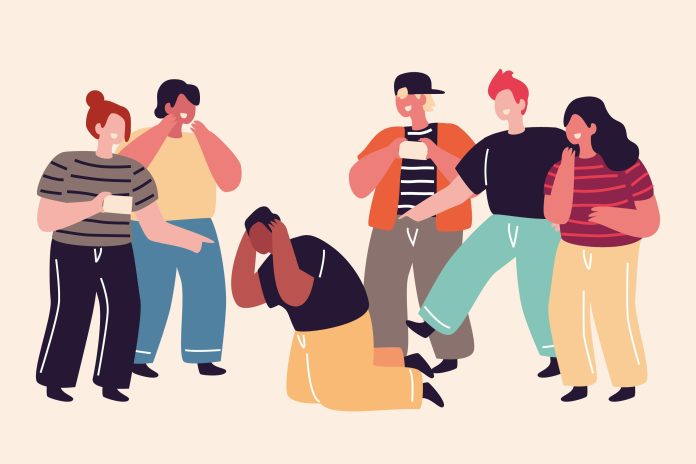The very first time anybody gets acquainted with bullies is during their school years. If they get lucky, they are not on the receiving end. What we witness in schools or other educational institutions for that matter, forms a small part of bullying. It manifests itself much later in life as well. To discuss the ramifications it could have, it is vital to first understand what this really means.
Bullying refers to any unwanted, aggressive behaviour that involves a real or perceived power imbalance. It shows up in several forms. Verbally, the use of abusive language and trolling are common instances. Physical bullying is another instance we’re quite familiar with. Pushing others’ boundaries, showing disrespect, and groupism represent social or relational bullying. Cyberbullying is a comparatively recent phenomenon but leaves a devastating impact, nevertheless.
It’s worth remembering that bullying is a behaviour and not a trait. If we’re asked who the involved parties are, we’d say it’s the bully and the victim. Well, that was a narrow miss. We’ve left behind the bystander who is often a witness to it. Now they could either be indifferent, not get involved and choose to overlook this, or they could behave inappropriately, wherein they instigate and encourage the bully in an act of joining in. Passive support or acceptance is just as bad.
How does all this affect the bullied? As obvious as this question sounds, it needs answering. While physical injuries may be common, the consequences could be far-reaching. At the social level, withdrawal from peers due to lack of trust amounts to social isolation. In case of reduced interpersonal interaction with family members and their support system, persisting feelings of loneliness show up. Regarding academics, poor grades, deteriorated academic performance, and reduced participation in classroom activities are only the tip of the iceberg. Self-esteem is hard hit by what they’ve endured. Depressed mood, reduced overall functioning and sleep disturbances are soon to follow. At the behavioural level, avoidance gets reflected through drop-outs, aggression, which is quite easily displaced on younger people and risky behaviours.
What’s the way out? Like most other behavioural difficulties, there’s an increased role of self that comes into play here. It is worth noting the patterns that are created. Let’s get our ABCs right. You heard me. The initials refer to the antecedent behavior consequence. Here, we look on as observers. The setting event, or the circumstances under which bullying is more likely to happen, sets the motion for the antecedent or triggering event that’s set off the problem behaviour, happening immediately before it. Thereupon, the problem behaviour presents itself, which is observable to others as well. That leads us on to the maintaining consequence, the function or need, which probes us to ask what the person gets or avoids, i.e., the payoff.
The next set of concerns should be:
• Managing the consequence to ensure that these individuals receive reinforcement for positive behaviours, not the problematic ones.
• Teaching skills to replace their problem behaviour and satisfy the same functional need.
• Adjusting the environment to make the problem behaviour unnecessary.
At the community level, we’re tasked with several roles. The role of authority is to be emphatic, impartial and convey zero tolerance towards bullying. The role of peer support is to stop the bullying and stand by the victim. The role of observers is to say ‘no’ using words, actions and when that assumes the form of a chain reaction, that functions as an Anti-Bullying Squad. The idea is to clearly state their disapproval of it without confrontation or resorting to abusive language.
What’s also worth noting is that the life of a bully gets affected too. Of course, their oppressive behaviour that makes them go on a power trip after belittling others is wrong. They need to understand boundaries and respect it too. Being assertive is what it takes to step up against this activity. Having moral support is always a plus. Blaming the victim is not a solution to this. Nor is bullying a ‘bully’ helpful since it places us on the same ground where they stand, leaving no difference between their actions and ours. The goal is to condemn the faulty behaviour that has become one of the greatest threats to mental well-being. Let us not walk down the same path as they do but take on a wittier approach to building safe spaces at the societal level.




























